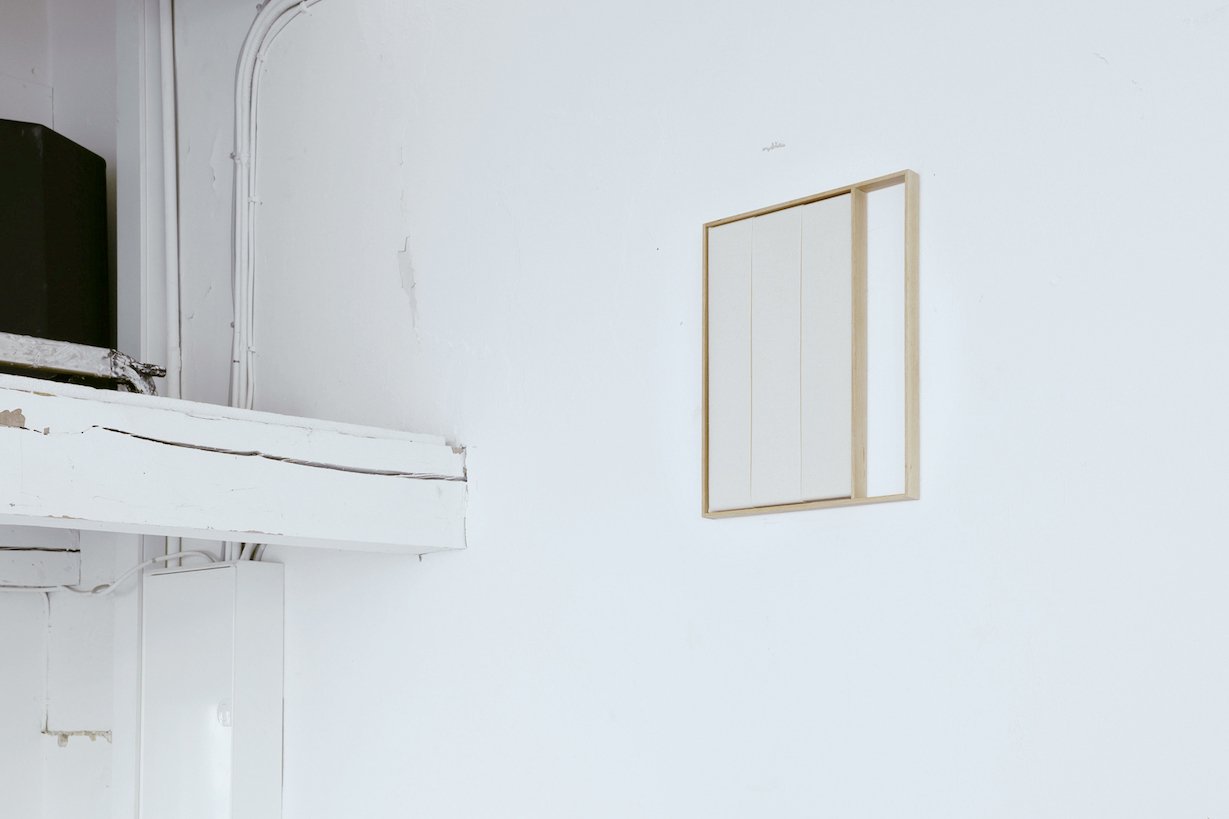Minhyeok Ahn, Arhun Aksakal, Rosario Aninat, Ziva Drvaric, Esra von Kornatzki and Simon Shim-Sutcliffe
gross floor area
Studio Jochen Hendricks, Frankfurt am Main (DE)
09. - 13.04.2022
Curated by Clara Maria Blasius
Photos by Jiyoon Chung
The flooring of the backyard gives way slightly underfoot. The industrial door requires a strong pull to open. Two narrow flights of stairs lead to the first floor. Access to the room is at lower ceiling height; after a few steps, the entire volume extends. The rounded edges of plastered ceiling beams seem to divide the room into segments. Openings in the outer wall let in daylight. The afternoon sun casts light bodies shaped by the windows onto the floor; they attract and direct the view. The wall connection dynamically distorts the play of light. Traces make it possible to track earlier uses. Shadow lines on the wall, imprints of cables, which once carried high voltage current to the back of the room. The floor covered with stains and patches. Formerly deep, now filled in holes, where the heavy machinery of the workshop was anchored. A steel beam that crosses the room and then leads outside, holding the device for a pulley. The surface of the beam with obvious signs of aging, the fastening warped. A building’s gross floor area means the sum of all its floor areas. It is based on the external dimensions, the footprint, and represents the attempt to make the physical space tangible, to establish measurability and comparability. It does not contain any information about the actual usability and qualitative values, condition and expression of the room. It is a static measurement of a structure that is constantly—albeit slowly—transforming. Gross Floor Area plays with this namability and predictability, with expectations and memories, forms and symbols. The works deal with the constitution and (de)construction of spaces and objects, and investigate narratives and processes, realities and speculations that are fixed and perpetuated within the material. They capture parallel and contrary developments, the perception of passing time, and give expression to the sense of permanent genesis, transition, and decay. They make visible immaterialities enclosed within the building envelope—before they dissipate.
Clara Maria Blasius



